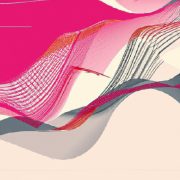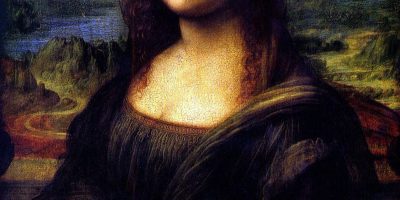In a world where silence often shouts and colors tell stories, the intersection of fashion and art emerges as a vibrant tapestry of human expression. “Threads of Expression: How Fashion Weaves Art and Beauty into Our Lives” invites readers to explore the intricate connections between what we wear and how we perceive the world around us. From the delicate drape of a garment to the bold strokes of a designer’s vision, fashion serves not only as a medium for self-expression but as a canvas where beauty is painted in threads, fabrics, and styles. This article unravels the ways in which clothing transcends mere functionality, becoming a powerful form of artistry that influences our emotions, shapes our identities, and ultimately informs our cultural narratives. Join us on this journey through stitches and styles, where each piece tells a story and every outfit becomes a brushstroke in the masterpiece of life.
Exploring the Intersection of Fashion and Artistic Expression
Fashion serves as a vibrant canvas where individual creativity meets cultural narratives. **Designers** and **artists** often collaborate, creating pieces that are not merely garments but rather expressions of their identity, heritage, and aspirations. In this dynamic space, the lines between clothing and art blur, leading to the emergence of various styles that challenge conventions and inspire movements. One can explore this phenomenon through various mediums and techniques, such as:
- Textile Art: Fabrics are transformed into masterpieces through techniques like embroidery, dyeing, and weaving.
- Wearable Art: Innovative pieces that can be worn, often combining unexpected materials and forms.
- Fashion Illustration: Visual narratives that capture the essence of clothing and its emotional resonance.
- Upcycling and Sustainability: Art created from repurposed materials signifies a commitment to environmental consciousness.
The **cultural significance** in fashion cannot be overlooked, as fabrics and styles are often steeped in symbolism. By weaving together threads of various narratives, fashion has the power to challenge norms, forge communities, and ignite social dialogue. Consider a pairing of aesthetics and socio-political expression. The table below outlines how different fashion movements reflect artistic ideologies:
| Fashion Movement | Artistic Ideology |
|---|---|
| Avant-Garde | Innovation and Defiance |
| Bohemian | Free-Spirited and Individualistic |
| Minimalism | Simplicity and Functionality |
| Streetwear | Urban Culture and Identity |

The Influence of Culture and History on Modern Fashion Trends
The vibrant tapestry of fashion is intricately woven with threads of cultural heritage and historical narrative. Each season’s trends often pay homage to the past, reflecting the zeitgeist of a specific era or movement. For instance, the revival of flapper dresses in contemporary collections serves as a nod to the roaring twenties, encapsulating the spirit of liberation and rebellion that characterized the decade. Similarly, the resurgence of utilitarian styles, reminiscent of wartime practicality, mirrors current societal shifts towards sustainability and functionality over ostentation. This cyclical nature of fashion not only keeps history alive but also fosters a dialogue between generations, as each piece of clothing tells a story waiting to be expressed through modern lenses.
Furthermore, cultural influences permeate modern fashion, as designers draw inspiration from diverse global aesthetics. Native patterns, tribal motifs, and traditional garments are reinterpreted to create a dialogue between tradition and innovation. Observing **how these elements combine** can be enlightening:
- Japanese Kimono Silhouettes: Adapted into contemporary streetwear.
- African Print Fabrics: Infusing vibrant colors into luxury fashion houses.
- Scandinavian Designs: Highlighting simplicity and functionality in everyday wear.
Fashion today acts not only as an artistic expression but also as a canvas portraying socio-political narratives and cultural identity, allowing individuals to showcase their heritage with pride. This cross-cultural exchange enriches the fashion landscape, allowing it to evolve continually while staying firmly rooted in its rich lineage.

Sustainable Fashion: Weaving Beauty with Conscious Choices
In a world where consumerism often overshadows craftsmanship, the rise of ethical production practices heralds a new era in the fashion industry. Designers are increasingly enamored with the idea that each garment tells a story—stories of culture, tradition, and sustainability. By opting for materials that are eco-friendly and ethically sourced, brands are acknowledging their responsibility to the planet. The use of organic fabrics, upcycled materials, and low-impact dyes transforms clothing from mere possessions to expressions of art that resonate with deeper values. With every stitch, these pieces reflect a commitment to minimizing environmental impact while celebrating individual expression.
Moreover, consumer awareness plays a pivotal role in this transformation. Shoppers are now embracing a shift towards thoughtful purchasing decisions, seeking out brands that are transparent about their production processes. This movement fosters an appreciation not just for the aesthetics of fashion, but for the integrity behind it. The intersection between beauty and ethical considerations is evident in popular trends such as slow fashion and minimalism. As consumers prioritizing sustainable choices over fast trends, the industry is encouraged to evolve. Ultimately, this symbiotic relationship between creativity and responsibility can lead to fashion that is not only visually captivating but also infused with meaning and purpose.
Insights and Conclusions
In the intricate tapestry of life, fashion stands as a remarkable thread, weaving together the realms of art and beauty in ways that transcend mere appearance. As we navigate our daily lives, clothing becomes a canvas upon which individuals paint their stories, aspirations, and cultural narratives. Each piece we wear is a brushstroke, a reflection of our identity and a testament to the artistry that surrounds us.
Fashion, much like art, serves as a powerful medium for self-expression, fostering connections and sparking dialogues. From the vibrant colors that evoke emotion to the innovative designs that challenge norms, every garment carries the potential to convey meaning and inspire change. As we continue to explore the relationship between fabric and creativity, we remember that it is not just about trends but about the stories and thoughts stitched into the seams of our everyday wear.
Ultimately, the beauty of fashion lies in its ability to resonate on a personal level while simultaneously uniting us in a shared appreciation for art. So, as we don our outfits each day, let us celebrate the transformative power of fashion—a vibrant thread in the ever-evolving narrative of human expression, art, and beauty that enriches our lives in countless ways.



















Comments